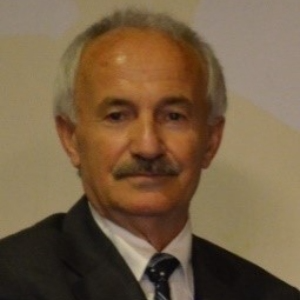Title : Lattice Reactions Governing Thermoelasticity and Superelasticity in Shape Memory Alloys
Abstract:
Some materials take place in class of smart materials with adaptive properties and stimulus response to the external changes. Shape memory alloys take place in this group by exhibiting dual thermoelastic and Superelastic characteristics. These alloys have shape reversibility at different conditions and shape of material cycled between original and deformed shapes at different condition. Shape memory effect is initiated by cooling and deformation the material and performed thermally on heating and cooling after first cooling and stressing treatments. Therefore, this behavior is called thermoelasticity. Superelasticity is another property and performed in only mechanical manner. These alloys can be deformed in parent phase region just over austenite finish temperature and recover the original shape on releasing the external forces. These phenomena are result of crystallographic transformations in the materials, called martensitic transformations. Shape memory effect is governed by successive thermal, and stress induced martensitic transformations. Thermal induced martensitic transformations occur on cooling with cooperative movement of atoms by means of lattice invariant shears in <110> - type planes on {110} - type planes of austenite, along with lattice twinning and ordered parent phase structures turn into twinned martensite structures; these twinned structures turn into detwinned martensite structures by means of strain induced martensitic transformation with deformation in martensitic state. Superelasticity is also the result of stress-induced martensitic transformation, and parent austenite phase structures turn into the fully detwinned martensite with the stressing. Superelasticity exhibits normal elastic material behavior, but it is performed in non-linear way; loading and unloading paths are different, and hysteresis loop reveals energy dissipation. Copper based alloys exhibit this property in metastable β - phase region, which has bcc-based structures at high temperature parent phase field. Lattice invariant shear and twinning is not uniform in copper alloys and they give rise to the formation of unusual layered complex structures, like 3R, 9R or 18R structures depending on the stacking sequences, with lattice twinning. The unit cell and periodicity is completed through 18 layers in direction z, in case of 18R martensite, and unit cells are not periodic in short range in direction z.
In the present contribution, x-ray diffraction and transmission electron microscopy studies were carried out on two copper based CuZnAl and CuAlMn alloys. X-ray diffraction profiles and electron diffraction patterns exhibit super lattice reflections inherited from parent phase due to the displacive character of martensitic transformation.
Keywords: Martensitic transformation, shape memory effect, thermoelasticity, superelasticity, lattice twinning, detwinning.
What will audience learn from your presentation?
Shape memory alloys are multifunctional materials and used as shape memory devices from biomedical to every field of engineering.



